Sputnik presents a photogallery of unique photos that should not have been taken at all. The university, initially founded as the Moscow Mechanical Institute of Munitions, for many years existed in secrecy. Thus, photography was prohibited on its territory. Many MEPhI employees were classified as participants of the Soviet atomic project.
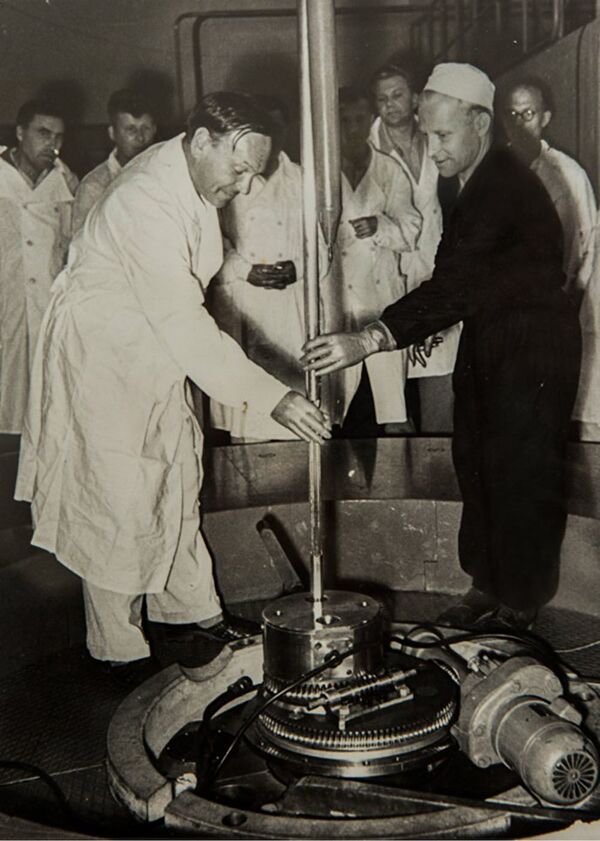
1/12
© Photo : From the archive of National Research Nuclear University MEPhI
Launching the MRR-2000 nuclear reactor at MEPhI, May 26, 1967.
The Model Research Reactor, which has a design thermal capacity of 2000 kW, has been used for 50 years by MEPhI for research in reactor physics, neutron physics, radiation physics of semiconductors and dielectrics, radiation material science, nuclear physics, and medical physics.
The Model Research Reactor, which has a design thermal capacity of 2000 kW, has been used for 50 years by MEPhI for research in reactor physics, neutron physics, radiation physics of semiconductors and dielectrics, radiation material science, nuclear physics, and medical physics.

2/12
© Photo : From the archive of National Research Nuclear University MEPhI
MEPhI workers fine-tune an ionization calorimeter, 1964.
The device weighed 40 tons, which explains the slogan, ”A Physicist Must Do Physical Work”, which appeared under the ceiling of the round laboratory hall as the calorimeter was being developed and mounted.
The device weighed 40 tons, which explains the slogan, ”A Physicist Must Do Physical Work”, which appeared under the ceiling of the round laboratory hall as the calorimeter was being developed and mounted.
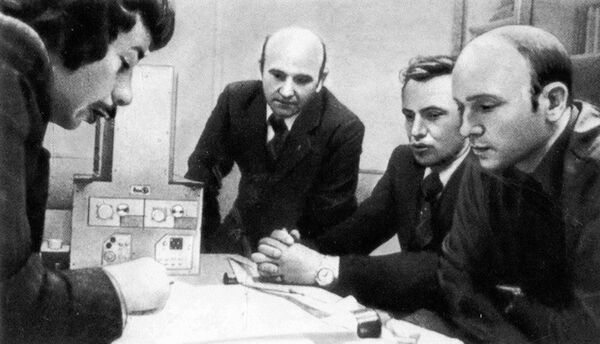
3/12
© Photo : From the archive of National Research Nuclear University MEPhI
In 1977, MEPhI researchers developed Yelena-F, a small-sized gamma-ray telescope designed to register gamma-ray and high-energy electron flows in near-Earth space and the upper atmosphere. The telescope was orbited in 1979.
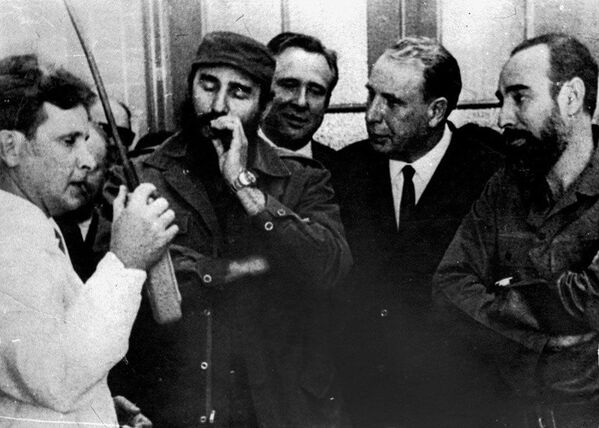
4/12
© Photo : From the archive of National Research Nuclear University MEPhI
Associate Professor of the Nuclear Physics Department A. Polyakov, far left, in the presence of Cuban leaders launches a subcritical stand designed for the Republic of Cuba. 1968.
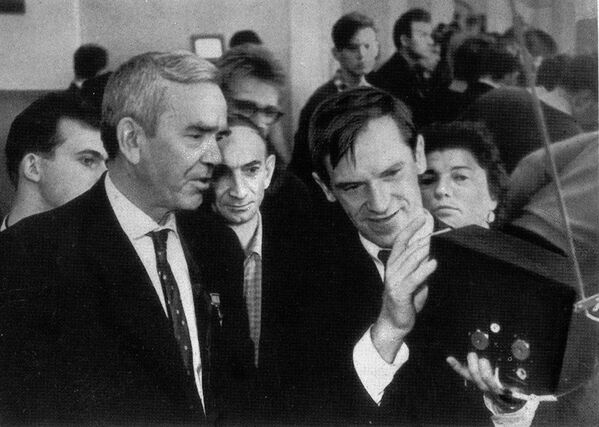
5/12
© Photo : From the archive of National Research Nuclear University MEPhI
A MEPhI researcher, Gabriel Aleksakov, shows the Malakhit compact transistor television set, which he developed, to Soviet polar explorer Ernst Krenkel. 1964.
The Malakhit did not usher in a new era on the consumer market, but it helped change the perception of what is possible, which makes it an interesting artifact of the history of Russian electronics.
The Malakhit did not usher in a new era on the consumer market, but it helped change the perception of what is possible, which makes it an interesting artifact of the history of Russian electronics.
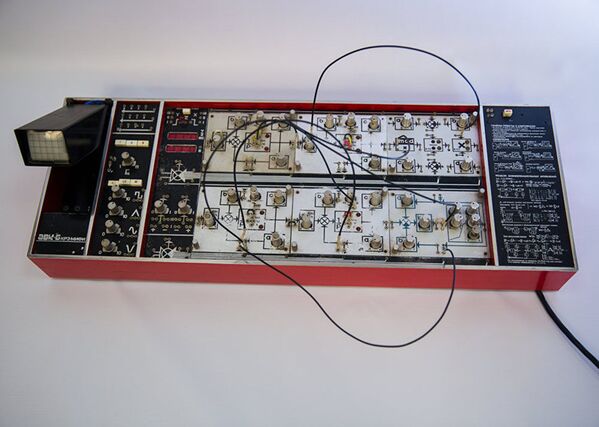
6/12
© Photo : From the archive of National Research Nuclear University MEPhI
Personal analog computer AVK-6.
The device was developed at the student design bureau for automatics (SDB-A) in 1976 and was the latest instalment of analog computers that helped simulate dynamic processes.
The device was developed at the student design bureau for automatics (SDB-A) in 1976 and was the latest instalment of analog computers that helped simulate dynamic processes.
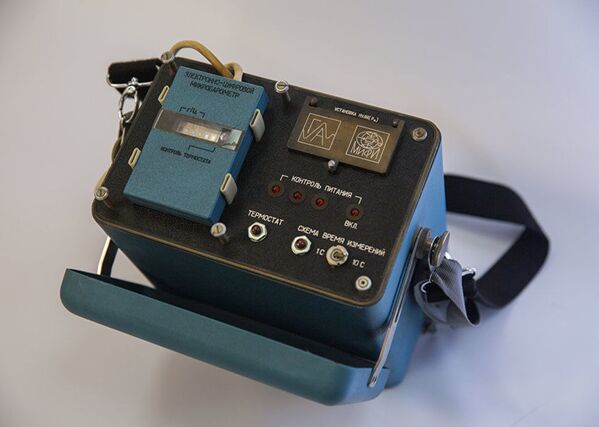
7/12
© Photo : From the archive of National Research Nuclear University MEPhI
A digital computer block for determining the exact moment a nuclear bomb should be released from an altitude of at least 20 kilometers was designed by a team from the NIS-1 laboratory headed by Professor F. Mayorov from the Department of Controlling and Specialized Computers.

8/12
© Photo : From the archive of National Research Nuclear University MEPhI
In 1955, Soviet physicists Nikolai Basov and Alexander Prokhorov designed the Soviet Union’s first experimental molecular quantum generator (maser), which became the prototype for all modern lasers. In 1964, Basov and Prokhorov won the Nobel Prize in Physics “for their fundamental work in the field of quantum electronics, which has led to the construction of oscillators and amplifiers based on the maser-laser principle.”
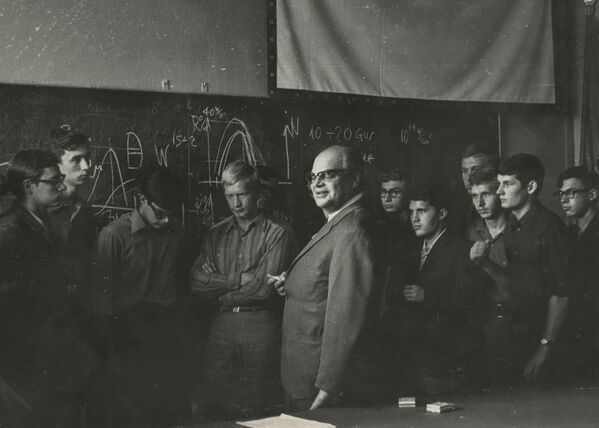
9/12
© Photo : From the archive of National Research Nuclear University MEPhI
Nobel Prize winner in physics Nikolai Basov, a 1950 MEPhI graduate, with students, in the 1960s.
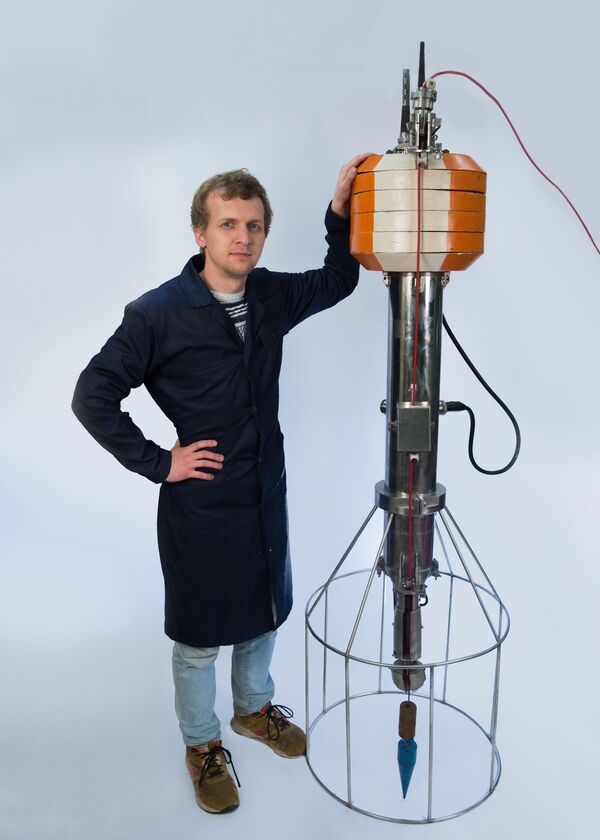
10/12
© Photo : From the archive of National Research Nuclear University MEPhI
The country’s first multichannel contactless probe was developed and assembled by MEPhI in 1971. It was designed to measure hydro-physical parameters of the ocean through vertical sound probing.
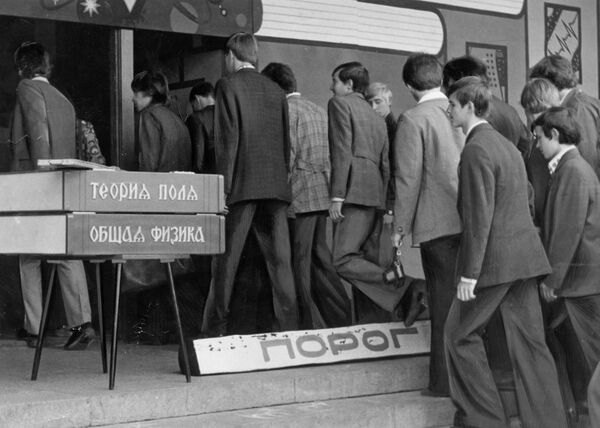
11/12
© Photo : From the archive of National Research Nuclear University MEPhI
This is a MEPhI tradition. First-year students must take an oath, trip over the “knowledge threshold”, and touch an object symbolizing their expertise area (an electron tube, a chip, half a weight etc.) It is only then that they are properly initiated into the large and close-knit MEPhI student community.

12/12
© Photo : From the archive of National Research Nuclear University MEPhI
First issue of the Engineer Physicist, MEPhI’s in-house newspaper, 1960.
The first issue cost 10 kopeks. The newspaper was sold for cash until the late 20th century. In the second half of the 1990s, the hall of the main building featured a box, next to a pile of newspapers, for collecting the one ruble-per-issue payment. On October 28, 1998, a September issue of the paper was delivered to the Orbital Station Mir, where MEPhI graduate, researcher cosmonaut Sergei Avdeyev was staying at the time.
The first issue cost 10 kopeks. The newspaper was sold for cash until the late 20th century. In the second half of the 1990s, the hall of the main building featured a box, next to a pile of newspapers, for collecting the one ruble-per-issue payment. On October 28, 1998, a September issue of the paper was delivered to the Orbital Station Mir, where MEPhI graduate, researcher cosmonaut Sergei Avdeyev was staying at the time.



